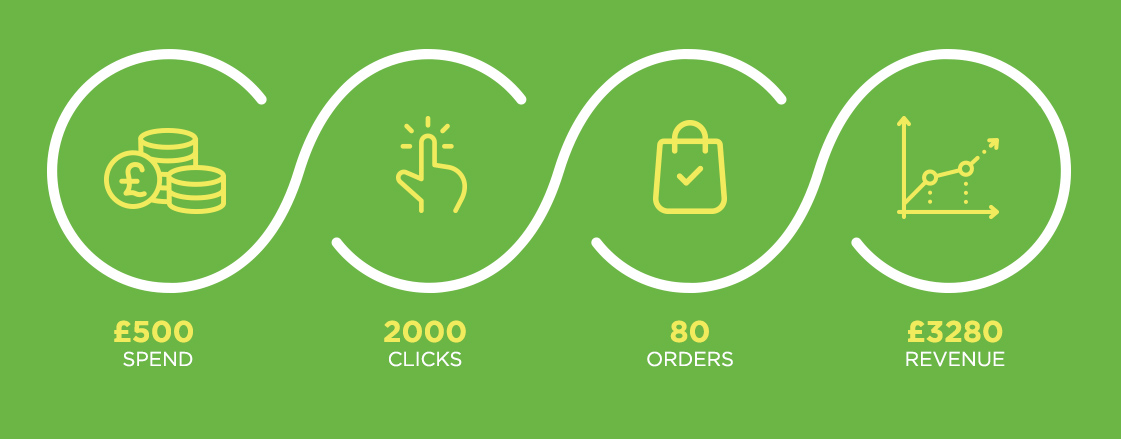Free digital copy
Get Speciality Food magazine delivered to your inbox FREE
Get your free copy
Assuming you have launched your website already, you’re ready to take the next steps to increasing sales. So, let’s discuss five tips that will help you successfully sell fine food online.
To begin with, you’re going to need to identify the best digital marketing channel for your business. And to do this, you need to take into consideration things such as your business model (what type of product are you selling) and your target market (who your customers are). If you have already defined your audience, that’s a great starting point.
Knowing exactly who will consume your product can allow for your marketing strategy to be more refined and generate the best results possible, especially with social media paid ads. If this sounds like your food business, a great option would be creating targeted ads on social platforms such as Facebook and Instagram, which we will explore further later in the article.
With food and drink marketing, there’s a large amount of specified search terms, which, if you rank for, can help increase the visibility of your business. For example, if you’re an online butcher selling gourmet meat online, search terms such as ‘buy fresh meat online’ and ‘best steak online’ are terms you’re going to want to capitalise on. It will allow you to capture those who are actively looking to purchase. This is where Google Advertising comes into play.
Google Ads can be hugely beneficial to any food and drink business looking to sell their products online, as you will be listed at the top of Google’s search results and can generate instant traffic.
Advertising on Google can help skyrocket your sales and increase your conversion rate, as your products are being shown to the right people at the right time of their sales journey. You can even target the specific details such as age, location and search device. Here is what a typical return on investment could look like for a fine food business using Google Ads to generate traffic:

The great part about this channel is you’re in control of the cost, and can alter, pause and increase the spend on campaigns based on your business needs. Google offers two different ways you can advertise your products, in the form of text ads and shopping ads.
Google Text Advertising
For as little as just 20p a click, you can get your fine food business listed at the top of Google’s search results.
Google Shopping
Visually advertise your product using Google Shop, and create a catalogue full of your fine food products ready to be displayed in front of the thousands of people who search for your products on a monthly basis.
Going back to social media advertising, Facebook is considered one of the most powerful platforms when it comes to generating traffic to food and drink websites. It’s the perfect tool to display your fine food products in front of potentially millions.
Being specific with your ad copy and relating it to your audience can help capture their attention and increase link clicks. You should be doing this within the first line of your ad – for example, a great starter line would be something a little like this:
‘Looking for FRESH high-quality steaks from a local Manchester Butcher? Perfect for midweek family meals, Get FREE delivery on your first order.’
This sells your product (high-quality steaks) addresses the location (Manchester butcher) and the audience demographic (families in Manchester). Adding an incentive to buy can also encourage your audience to shop with some urgency.
Food SEO can seem daunting, however there are plenty of resources on the web to help you get started. Matt Adams from Online Growth Guru suggests that just by adding basic Google information to your food and drink products, you’re doubling the potential of being listed in Google.
There are over 200 ranking factors that Google looks for, but most importantly, you should cover these three steps:
• Page title (the blue text you see in the search results)
• Product description
• Product image description and name
These pieces of information are vital if you want your food product to rank on the first page of Google’s search results. Once you’ve fully optimised your Google text, it should look something like this:

Generating food related backlinks is another factor Google use to determine your position in the search terms.
Creating informative and engaging content and sharing this with high-quality food and drink related site is how you can use this marketing method to its full potential.
Recipe content is a great way to truly showcase your product in action. Show your audience how you would prepare your delicious steak, with cooking recommendations and serving suggestions.
Blog-style content will help reach your target audience, and you’ll attract potential buyers who actually don’t know they are buyers yet. A user searching for recipe content is most likely not at the buying stage of their customer journey. At this point, they’re simply scouting for information using terms such as ‘how to cook steak’.
However, if they do land on your recipe, which is engaging and contains references to your product, they’re far more likely to go ahead and purchase the ingredients used within the recipe.
If you fully optimise your recipe with instructions and the method, you’ll reap the benefits of Google’s recipe section, which means more exposure for your food business.
So, these are 5 ways you can get started with increasing your sales online. Remember, there are lots of different avenues for growing your website, and focusing on a specific channel can have huge benefits a lot more quickly. It isn’t always about having the biggest budget either; combining these tips with research and time will generate product sales, drive traffic, and increase your businesses authority in the long run.